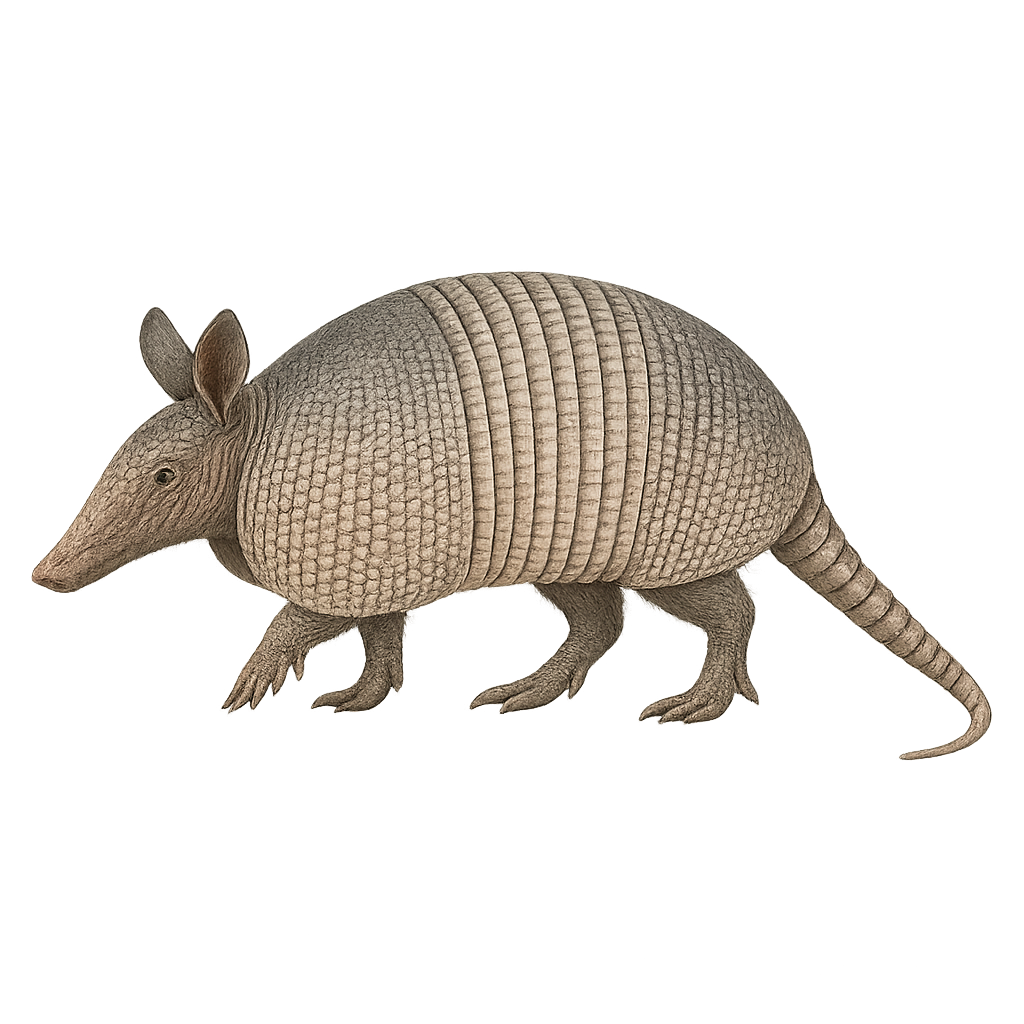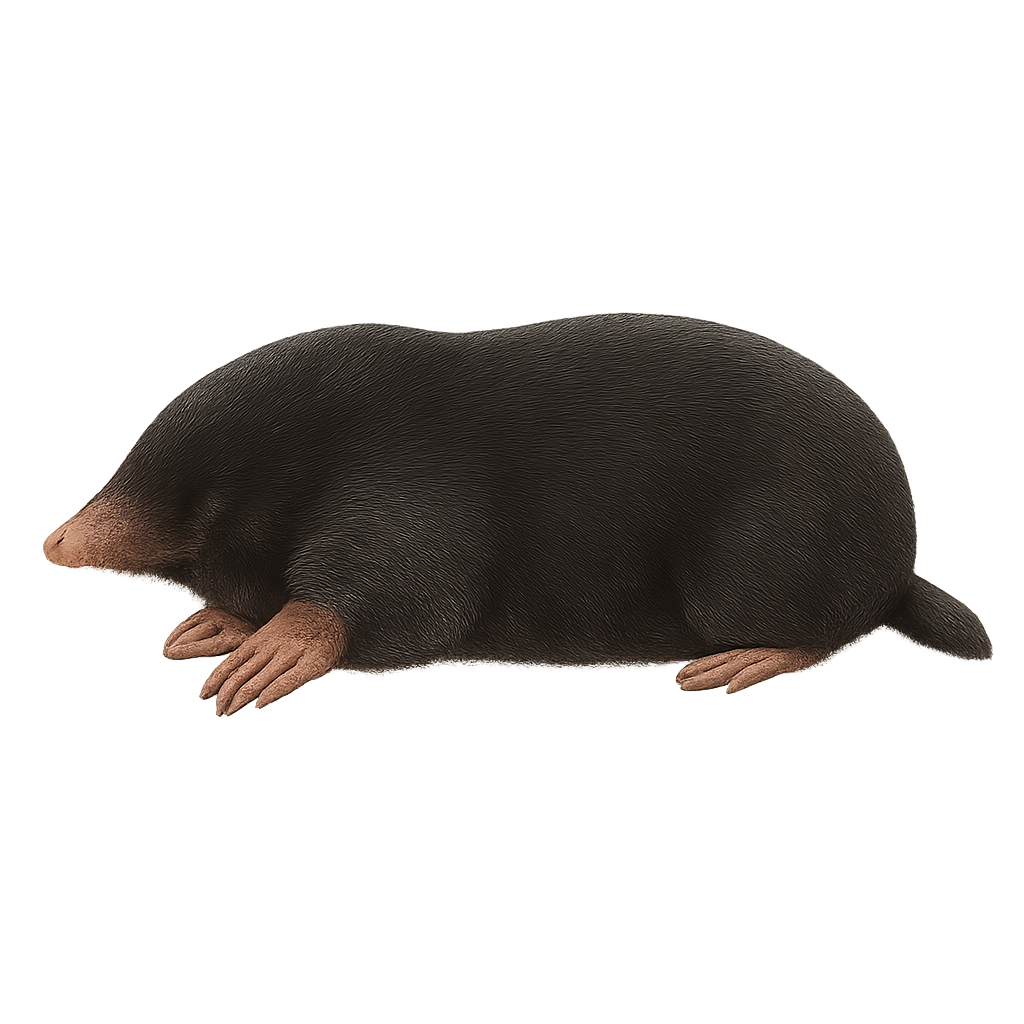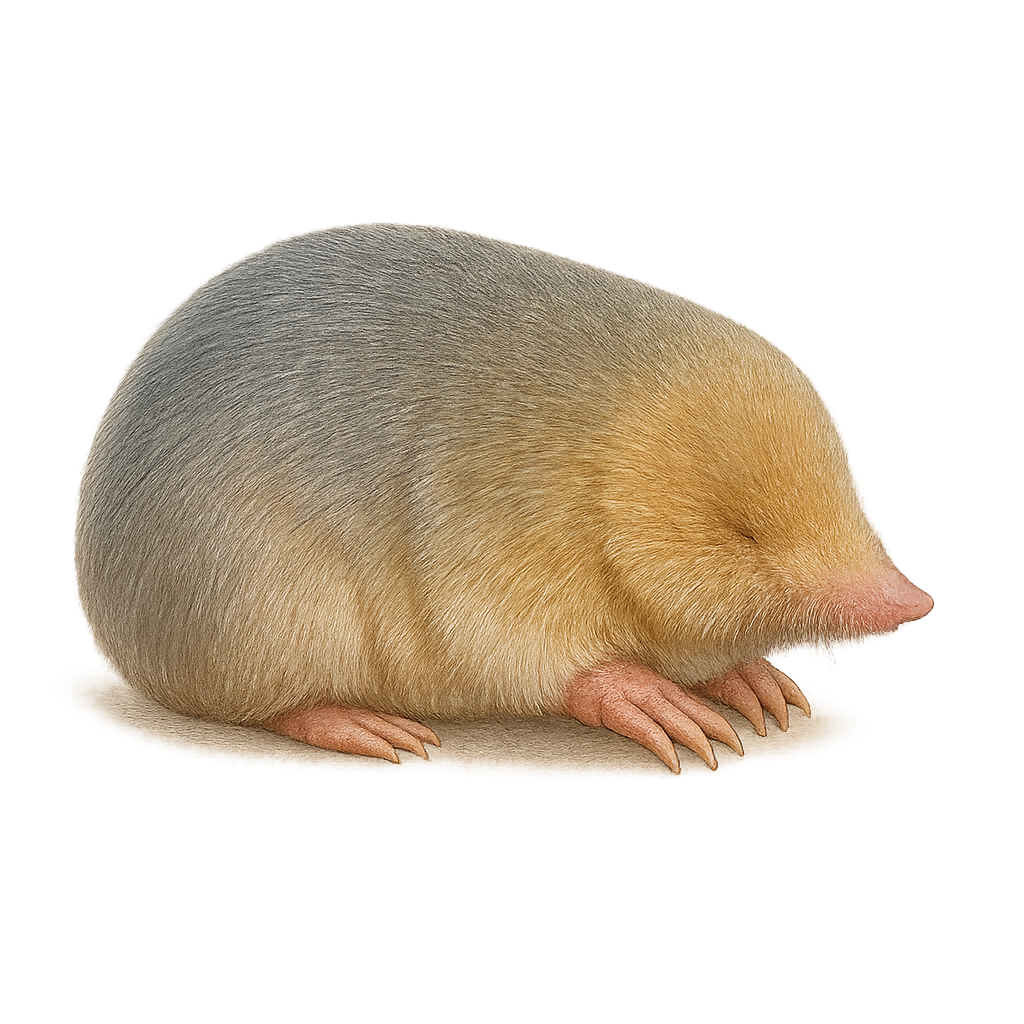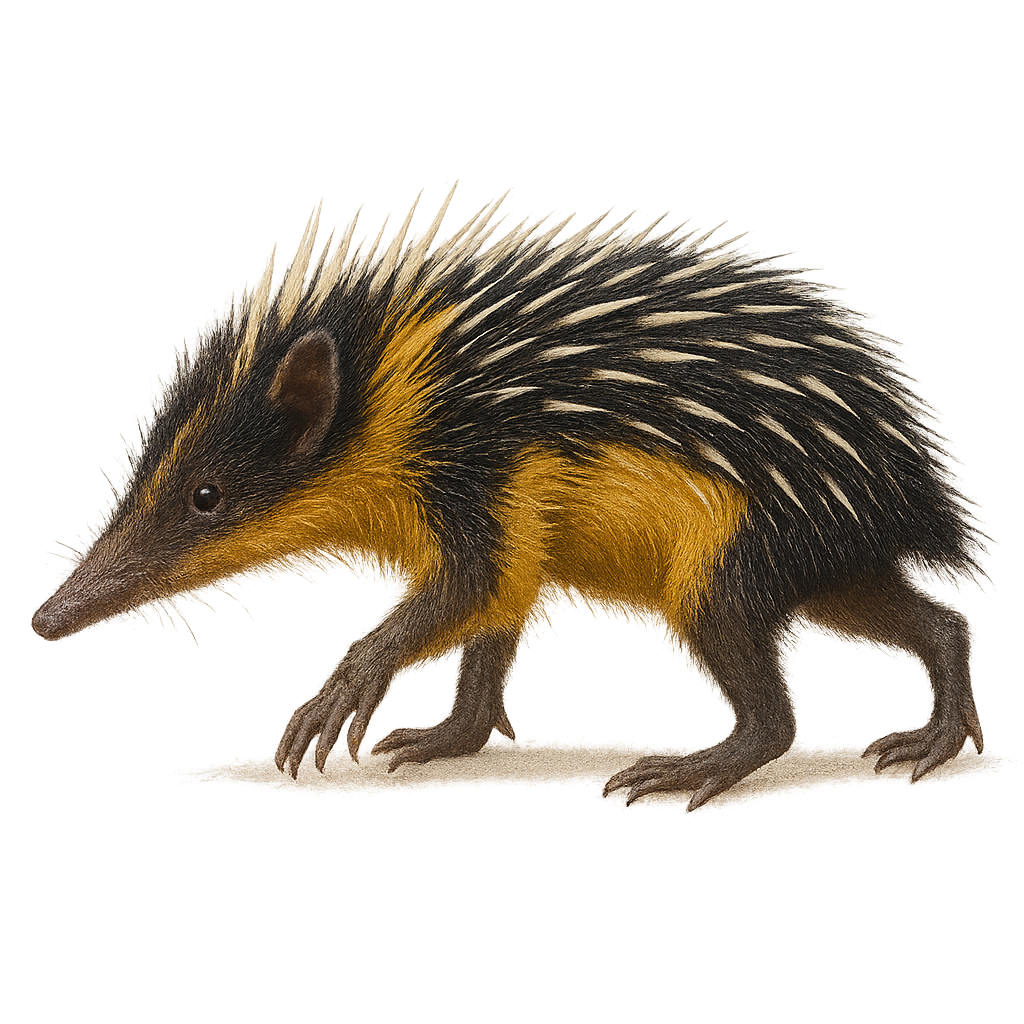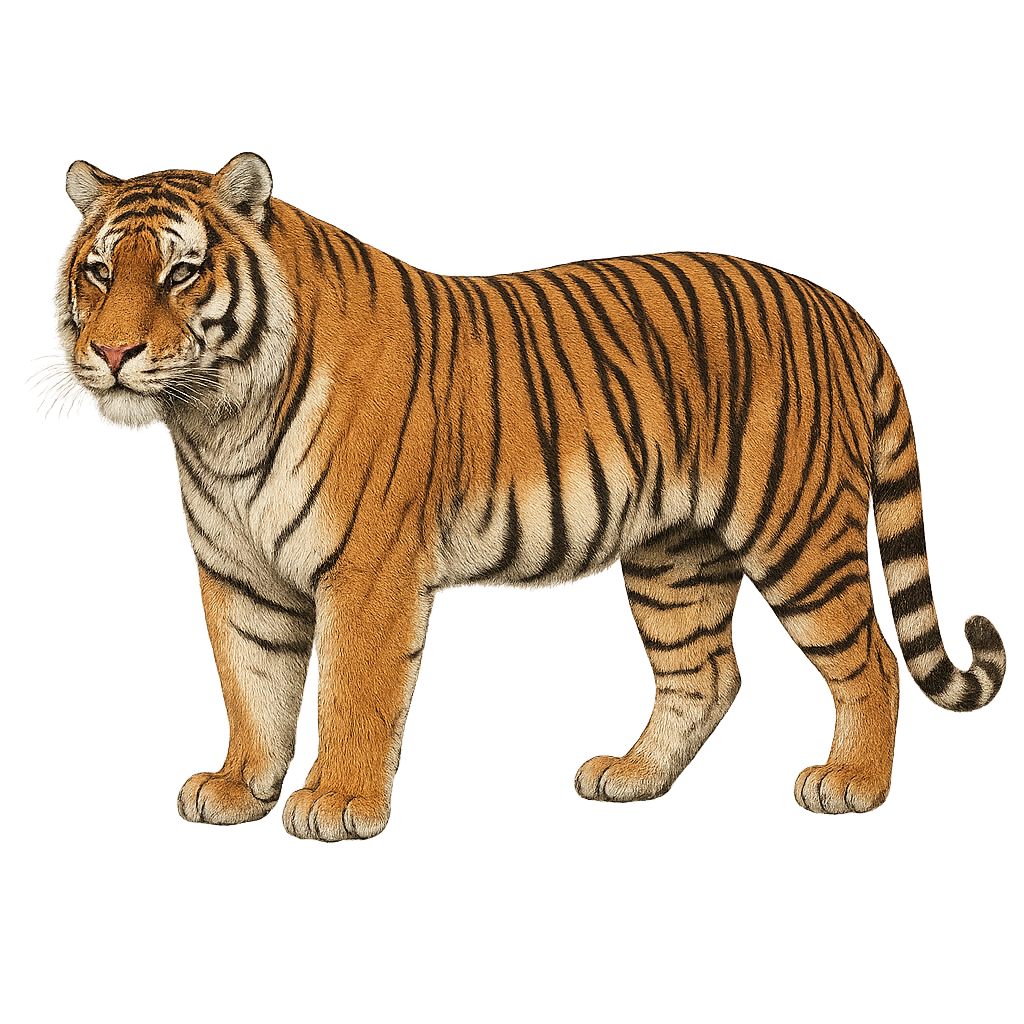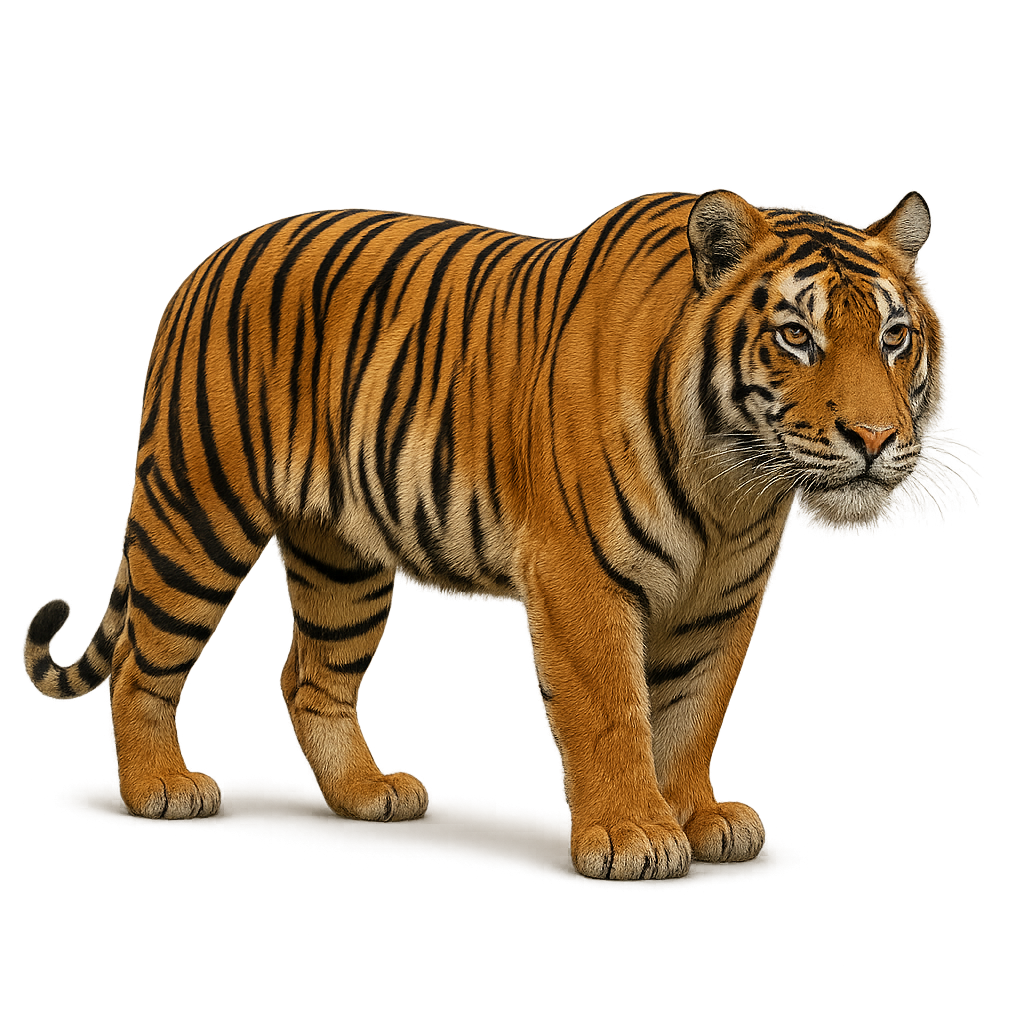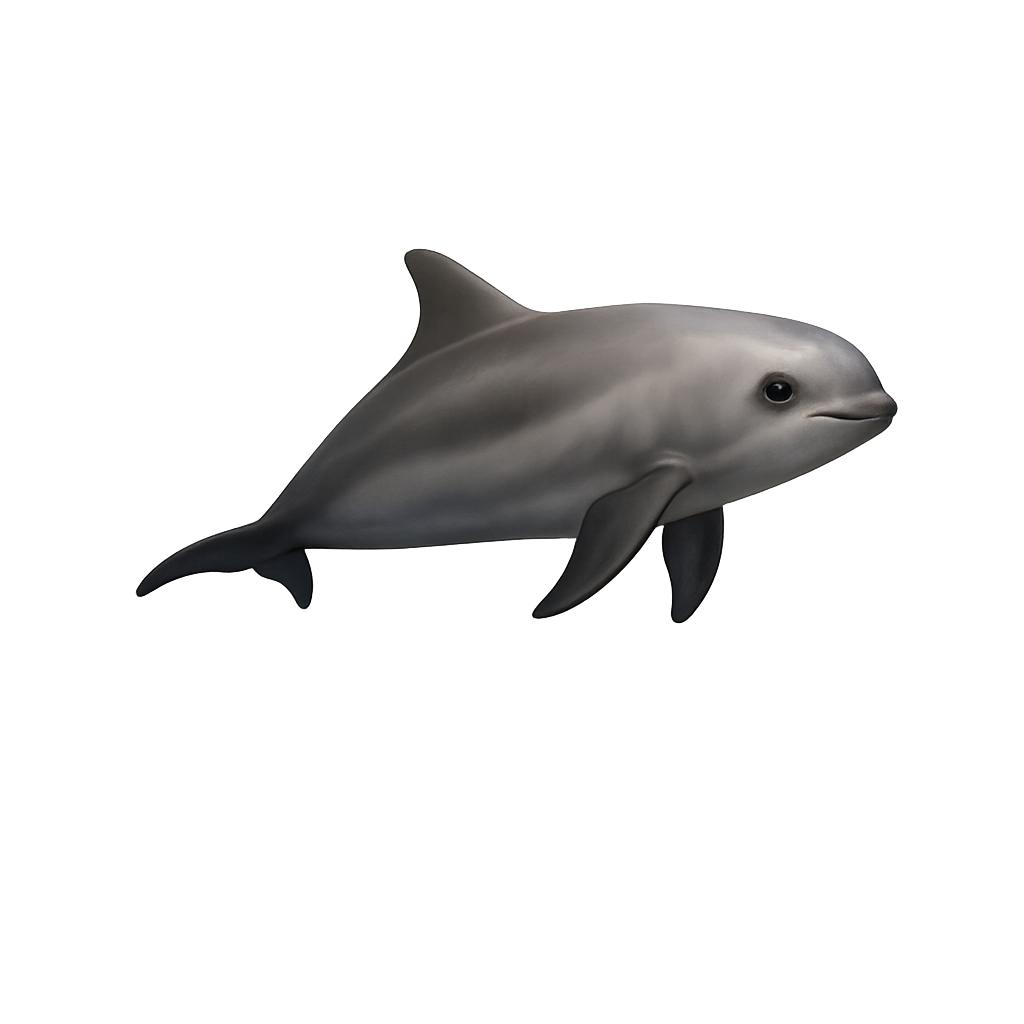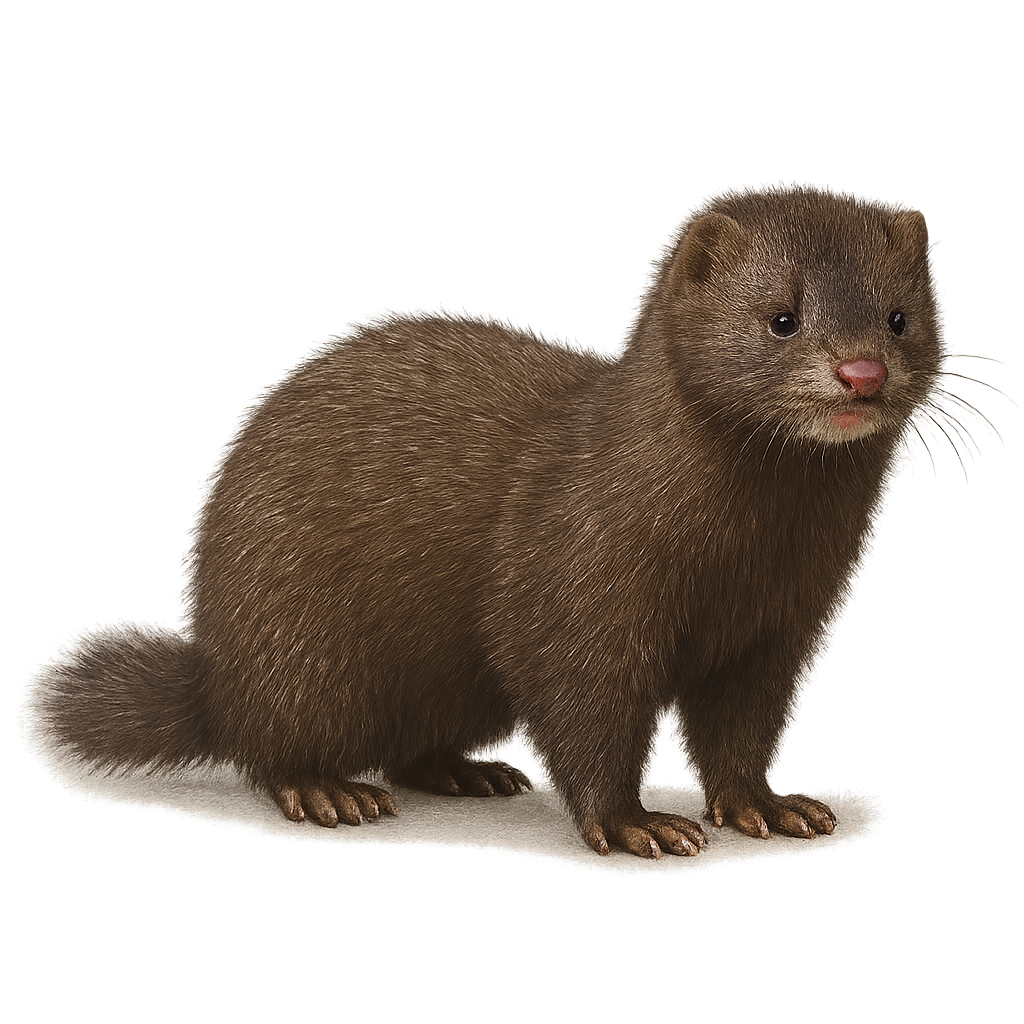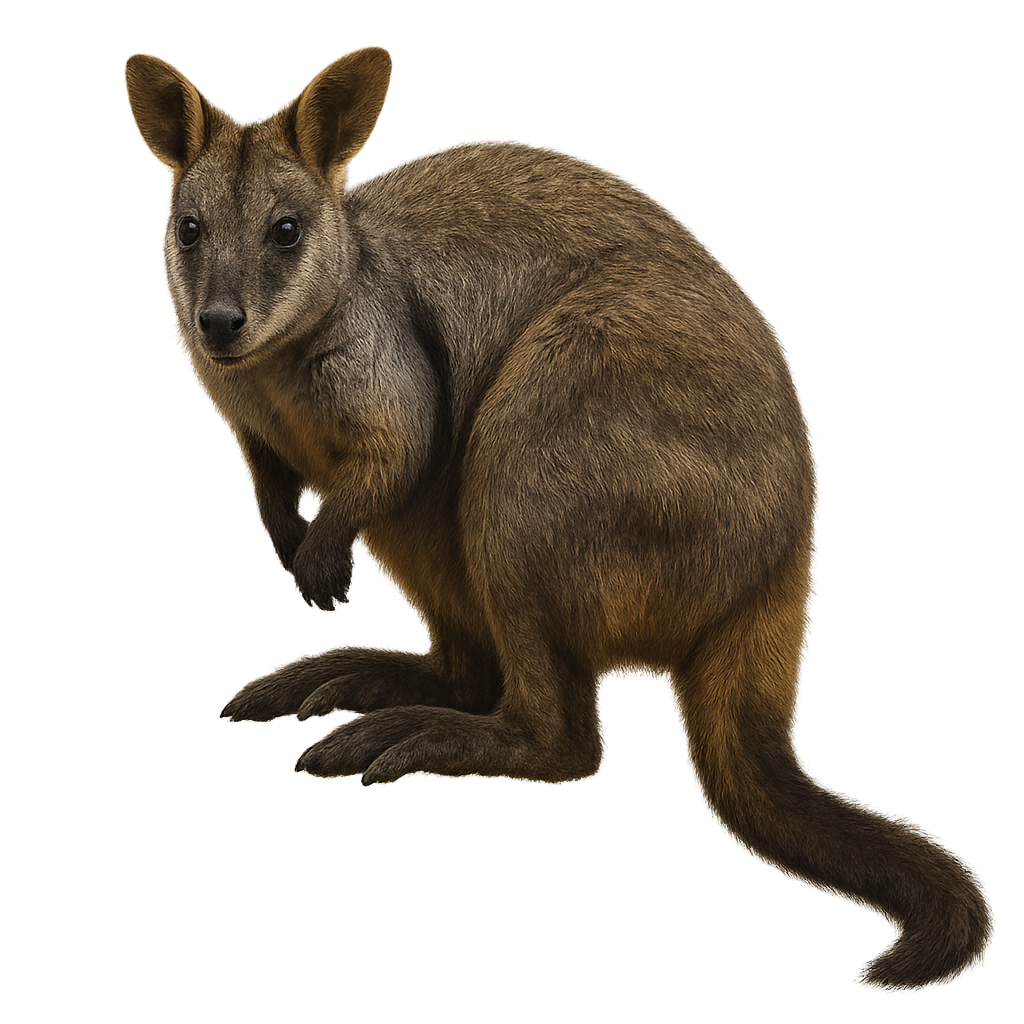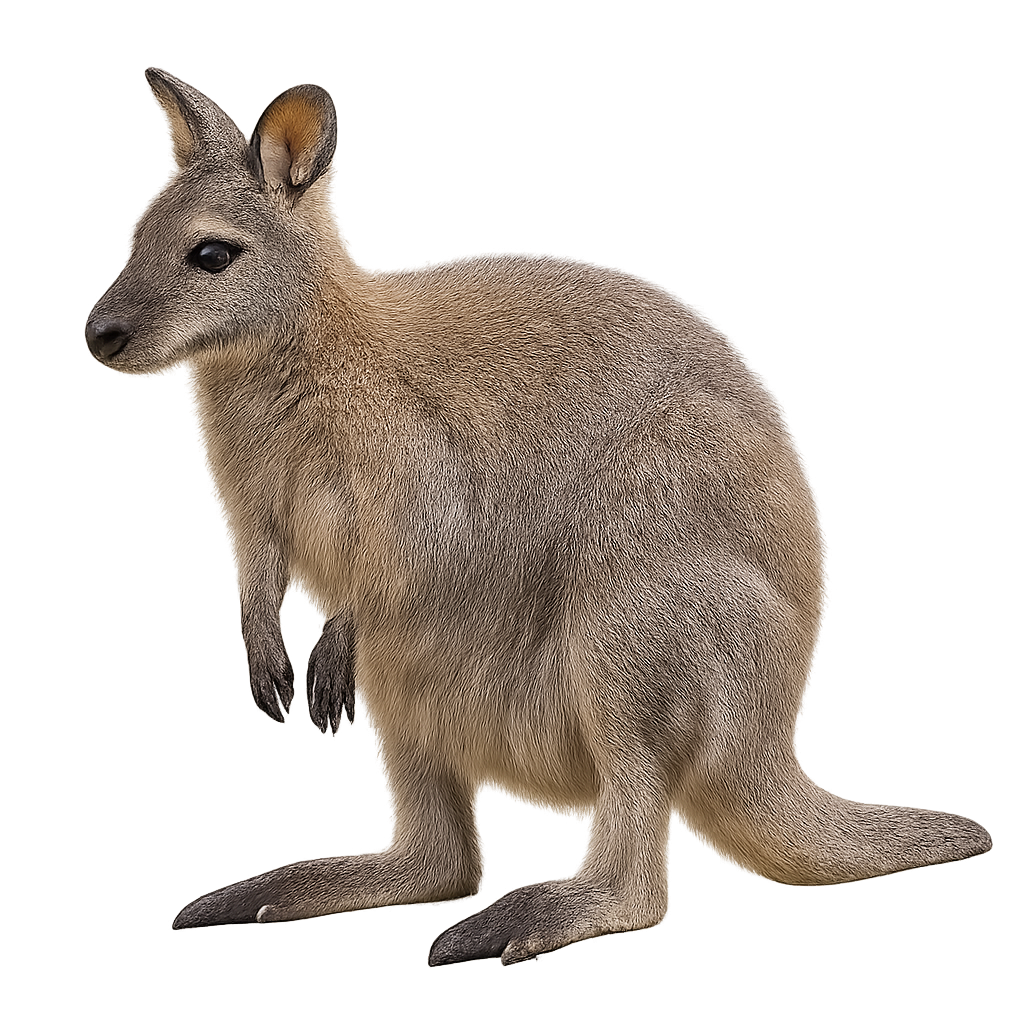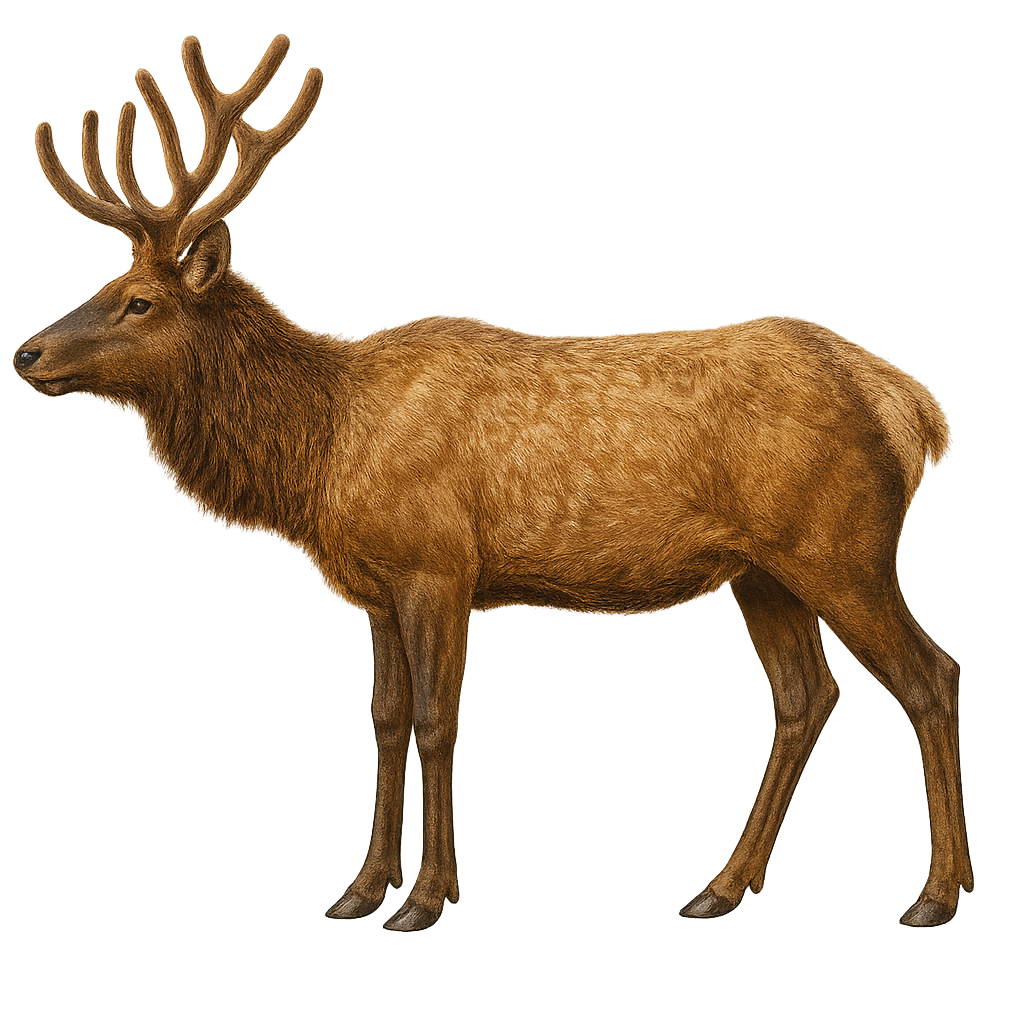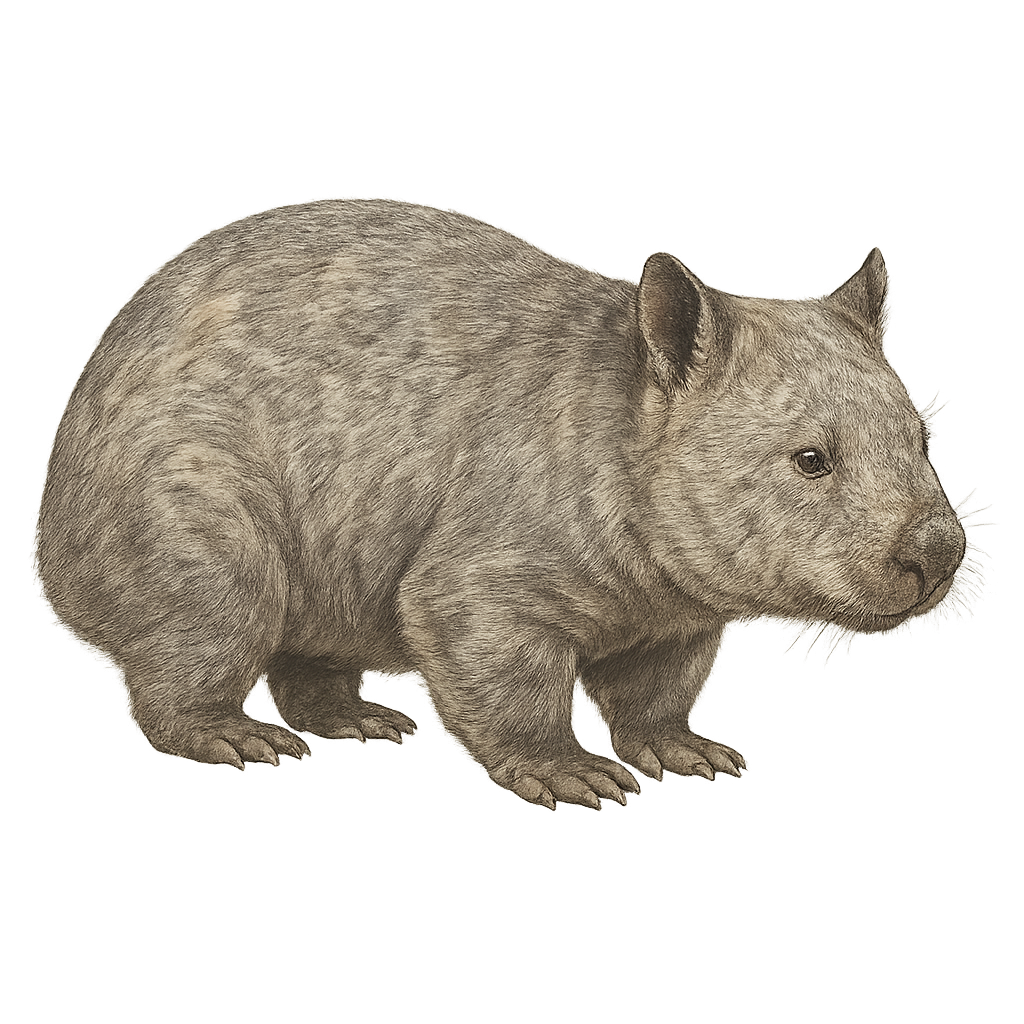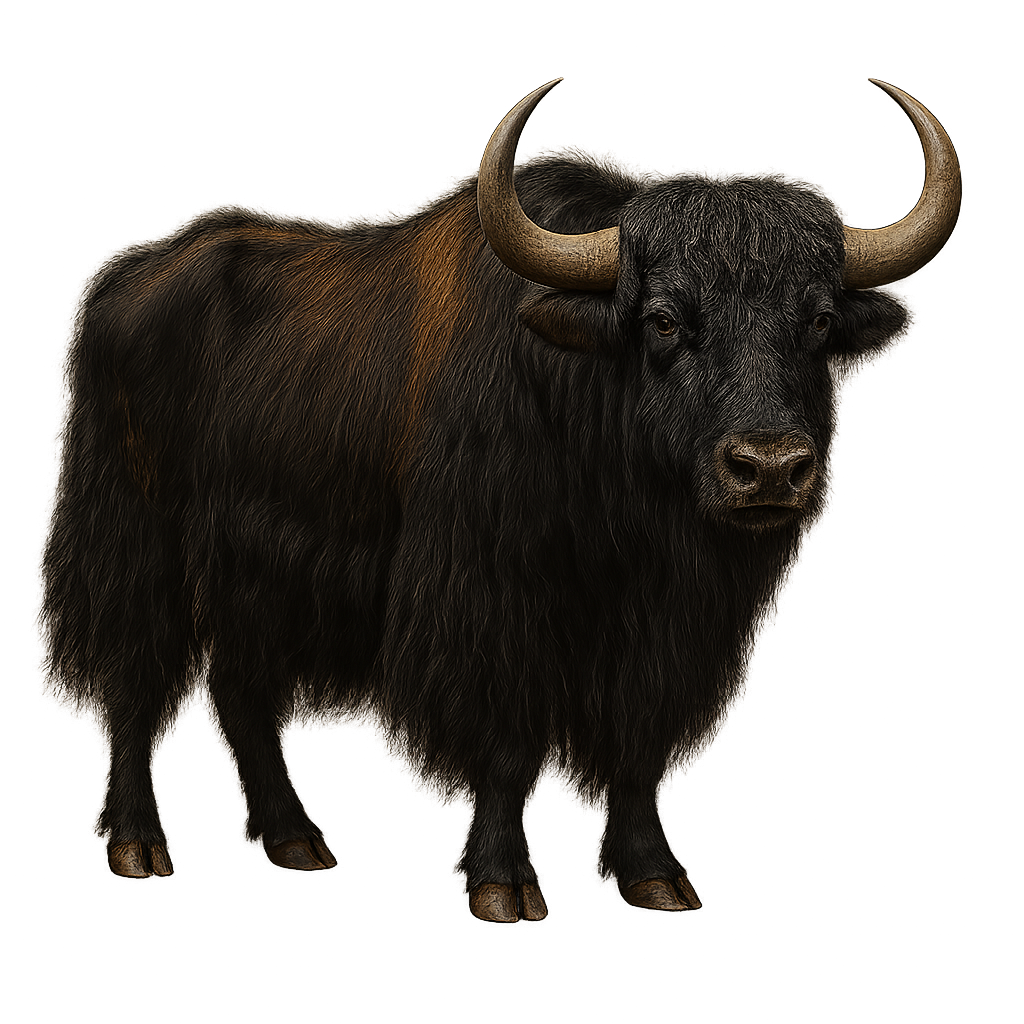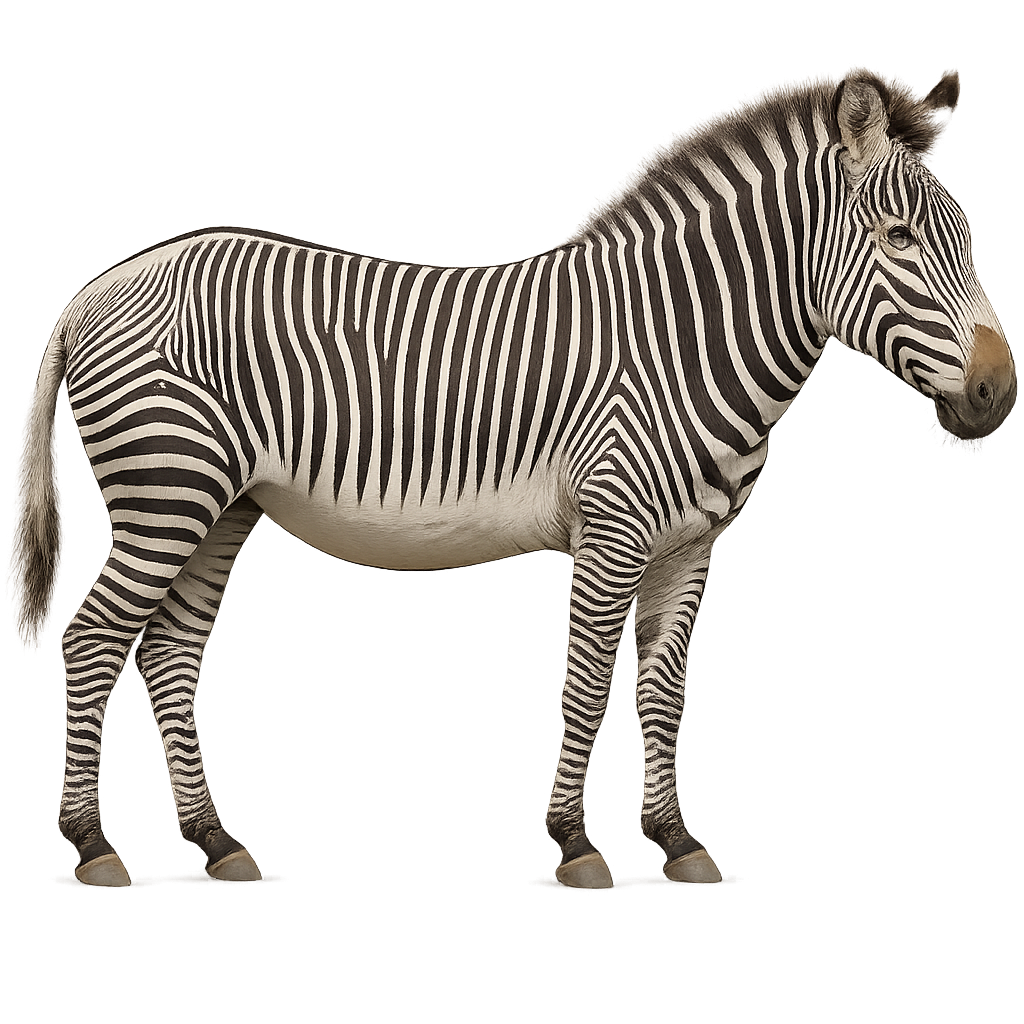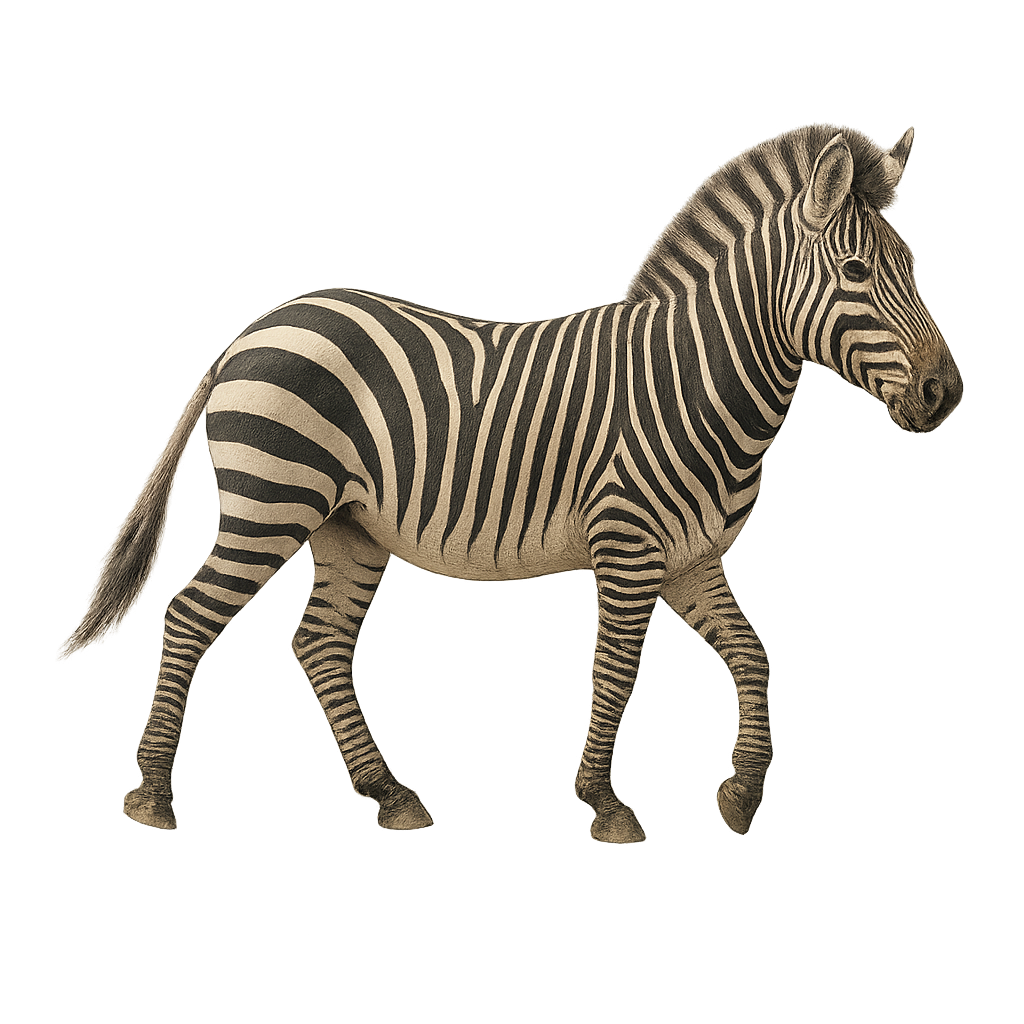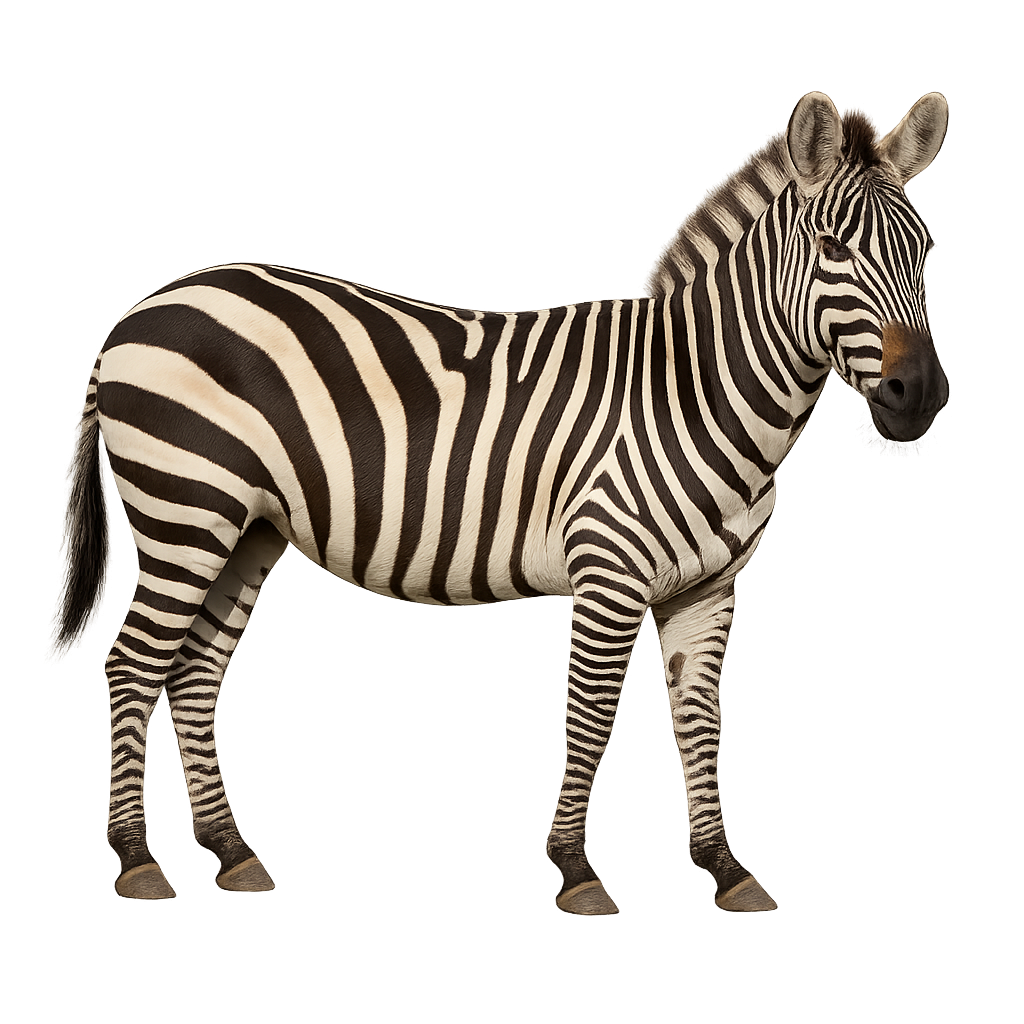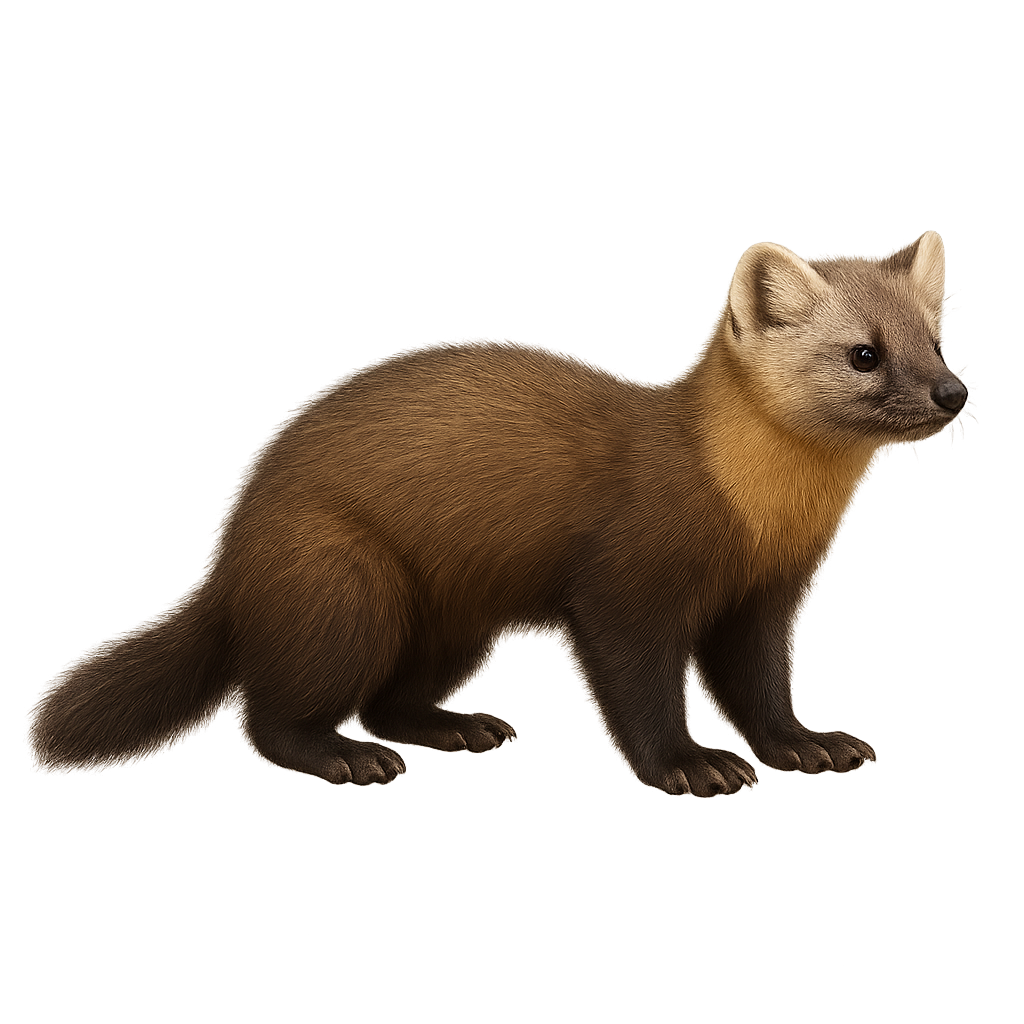The Tarsier des Philippines is a small nocturnal primate found primarily in the tropical forests of Southeast Asia, notably in the Philippines, Indonesia, and Borneo. It typically measures about 10 to 15 cm in length, with a tail of 20 to 25 cm, and weighs between 100 and 150 g. The Tarsier des Philippines is known for its remarkably large eyes, which account for about one-third of its head size, allowing it to see in low-light conditions. It also has long legs and large hands, which enable it to move agilely through the trees, where it primarily hunts insects, spiders, and occasionally small vertebrates. While its population remains relatively stable in some areas, the Tarsier des Philippines is threatened by deforestation and habitat loss.
The nine-banded armadillo, Dasypus novemcinctus, is a distinctive armored mammal native to the Americas. It is easily recognized by its hard shell made of bony plates and its nine movable bands that provide some flexibility. This armadillo typically measures between 40 and 60 cm in length, not including its tail, which can add an additional 25 to 40 cm. It weighs between 3 and 6 kg. Primarily nocturnal, it feeds on insects, small invertebrates, and occasionally fruits. It can dig quickly to escape predators or find food. Although often solitary, it can be seen in small groups during the breeding season.
The Giant Armadillo is the largest of the armadillos, found primarily in the tropical forests of South America, notably in Brazil, Bolivia, Paraguay, and Argentina. It typically measures between 1.5 and 2 meters in length, including its tail, and can weigh up to 60 kg. Its fur is rough and brown, and it has a hard shell, typical of armadillos, which serves as protection against predators. The Giant Armadillo is primarily nocturnal and terrestrial, feeding mainly on insects, worms, fruits, and roots. While it is an excellent burrower, it is threatened by illegal hunting and habitat destruction, leading to a decline in its population.
The European mole, Talpa europaea, is a small burrowing mammal found primarily in meadows, forests, and gardens across Europe. It is recognizable by its cylindrical body, velvety black fur, and powerful forelimbs adapted for digging. Measuring about 14 cm in length, it has a pointed snout and small eyes often hidden by its fur. Although nearly blind, it has a highly developed sense of smell and touch, allowing it to navigate efficiently underground. The European mole plays an important ecological role by aerating the soil and controlling pest insect populations.
The Amblysomus hottentotus, commonly known as the Hottentot Golden Mole, is a small insectivorous mammal endemic to southern Africa. It is characterized by its silky, golden-tinged fur, giving it a unique appearance. Adapted to a subterranean lifestyle, it has powerful forelimbs and robust claws for efficient digging. Its eyes are covered by skin, as vision is of little use in its underground habitat. It primarily feeds on insects and small invertebrates it finds in the soil. Although elusive, it plays a crucial role in the ecosystem by aerating the soil and controlling insect populations.
The Southern Marsupial Mole, Notoryctes typhlops, is a small marsupial mammal endemic to Australia. Adapted to a subterranean lifestyle, it has a cylindrical body, powerful forelimbs, and robust claws for digging. Its skin is covered with silky fur, usually cream or golden in color. It is blind, with eyes covered by skin, and lacks visible external ears. It primarily feeds on insects and larvae found underground. The marsupial mole is rarely observed due to its underground lifestyle and restricted habitat in the deserts and arid regions of central and western Australia.
The tayra is a carnivorous mammal native to the forests of Central and South America. It resembles a large marten, with dark fur and a long bushy tail. It is known for its great agility and ability to climb trees, where it hunts small mammals, birds, and fruits. It is a territorial and solitary animal, preferring forested habitats. Although its population is stable, it faces threats from deforestation and hunting.
The common tenrec is a small insectivorous mammal weighing 220–270 g, with coarse fur ranging from light to dark. Endemic to Madagascar, it inhabits tropical forests, shrublands, and agricultural areas. An opportunistic omnivore, it feeds on insects, worms, and small invertebrates. Solitary and nocturnal, it shelters in burrows or under leaf litter during the day.
The Lowland Streaked Tenrec, Hemicentetes semispinosus, is a small insectivorous mammal endemic to Madagascar. It is characterized by its striking black and yellow striped fur and spines, giving it a unique appearance. Measuring about 14 to 17 cm in length and weighing between 125 and 280 grams, this tenrec is primarily nocturnal and uses its spines for defense against predators. It inhabits tropical rainforests and scrub areas, feeding mainly on insects and worms. Its ability to produce sounds by rubbing its spines together is a fascinating trait used for intra-species communication.
The Tiger is a large cat primarily found in the forests, savannas, and grasslands of Asia, notably in India, China, Indonesia, and Russia. It typically measures between 2.5 and 3.5 meters in length, including the tail, and can weigh between 100 and 300 kg, depending on the subspecies. The Tiger is easily recognizable by its striped coat, which varies from yellow-orange to white, with distinctive black bands. It is a solitary and territorial predator, primarily feeding on large herbivores such as deer, wild boars, and buffalo. While it is at the top of the food chain, the Tiger is threatened by habitat loss, poaching for its fur and bones, and conflicts with human populations. Some subspecies, such as the Sumatran Tiger and the Siberian Tiger, are particularly endangered.
The Siberian tiger, or Panthera tigris altaica, is the largest living feline. It is distinguished by its thick, light-colored fur, adapted to the harsh winters of its natural habitat. Its black stripes on a pale orange background allow it to camouflage in coniferous forests and snowy steppes. This solitary predator is a nocturnal hunter, primarily feeding on large ungulates like deer and wild boar. Although its territory spans vast areas, it is threatened by deforestation and poaching. Conservation efforts are crucial for its survival, as it is classified as endangered by the IUCN.
The thylacine, or Tasmanian tiger, was a large nocturnal carnivorous marsupial up to 1.8 m long (including tail) and weighing 15–30 kg, with pale yellow fur marked by dark dorsal stripes. Endemic to Tasmania, it inhabited rainforests, scrublands, and grasslands, preying mainly on wallabies and birds at dusk and night. Solitary and shy, it sheltered in natural dens or rock crevices.
The Bengal Tiger is a subspecies of tiger found primarily in the forests of India, Bangladesh, Nepal, Bhutan, and Myanmar. It typically measures between 2.7 and 3.1 meters in length, with a tail of 1 to 1.2 meters, and weighs between 200 and 260 kg. Its fur is yellow-orange with distinct black stripes, and its impressive size makes it one of the largest and most powerful tiger subspecies. The Bengal Tiger is a solitary and territorial predator, primarily feeding on large herbivores such as deer, wild boars, and buffalo. Although its population is declining, the Bengal Tiger is one of the best-protected tiger subspecies, with active conservation efforts in wildlife reserves and national parks. It is still threatened by habitat loss, poaching, and human-wildlife conflicts.
The vaquita is a small porpoise (1.3–1.5 m, 40–60 kg) endemic to the Upper Gulf of California, with pale grey-blue skin and rounded head. Critically endangered, it uses echolocation to hunt fish and shrimp in turbid, shallow waters (<30 m). Fewer than 10 remain due to bycatch in gillnets and illegal fishing.
The Vicuna is a wild camelid native to the high plateaus of the Andes in South America. This small animal with silky, lightweight fur is closely related to the llama and alpaca, but unlike these, the vicuna is a wild animal. It lives in the mountainous regions of Argentina, Chile, Bolivia, and Peru, at high altitudes, often above 3,000 meters. The vicuna primarily feeds on herbaceous vegetation, especially alpine grasses. Its wool, soft and fine, is highly sought after, but it is protected by strict regulations. It is a timid animal, living in small groups and often moving over great distances in search of food.
The American mink, Neovison vison, is a small carnivorous mammal belonging to the Mustelidae family. Native to North America, it has been introduced to various parts of the world for the fur industry. This mustelid is recognizable by its dense, glossy fur, typically dark brown, and its slender silhouette. It measures between 30 and 45 cm, excluding its tail, which can reach 25 cm. The mink is an excellent swimmer and is often found near water bodies like rivers, lakes, and marshes. It primarily feeds on fish, small mammals, birds, and amphibians. Although solitary and territorial, it may occasionally share its territory with other minks.
The European Mink is a small carnivorous mammal primarily found in wetlands, rivers, and marshes of Eastern Europe, notably in Russia, Ukraine, Poland, and Hungary. It typically measures between 45 and 55 cm in length, with a tail of about 15 to 20 cm, and weighs between 700 g and 1 kg. Its fur is generally dark brown on the back and lighter on the belly, with a distinctive black band running across its face. The European Mink is an excellent swimmer and fisher, primarily feeding on fish, crustaceans, and small mammals. Unfortunately, it is critically endangered due to habitat loss, water pollution, and competition with the American Mink, an invasive species. Its population has significantly declined, and it is now classified as an endangered species.
The Common Wombat is a terrestrial marsupial found primarily in Australia, notably in temperate forests and grasslands. It typically measures between 1 and 1.2 meters in length and weighs between 20 and 35 kg. Its fur is generally thick, ranging from brown to gray, and it has a broad head and a short tail. The Common Wombat is herbivorous, feeding primarily on roots, bark, and herbaceous plants. It is nocturnal and spends most of the day in burrows that it digs itself. While its population remains relatively stable, it is sometimes threatened by habitat loss due to urbanization and changes in agriculture.
The Petrogale penicillata, commonly known as the brush-tailed rock-wallaby, is a medium-sized marsupial distinguished by its long, bushy tail resembling a brush. Native to Australia, it primarily inhabits rocky and rugged regions where it can move with agility thanks to its powerful legs and sharp claws. Its fur is generally gray-brown with lighter shades on the belly, allowing it to blend into its surroundings. This wallaby is mainly nocturnal, resting in crevices during the day. Unfortunately, it is threatened by habitat loss and predation by introduced species.
The Bennett's wallaby is a small herbivorous marsupial, 70–100 cm long and 7–20 kg, with pale grey-brown fur. It inhabits open woodlands, grasslands and scrub in southeastern Australia and Tasmania, feeding on grasses and young shoots. During the breeding season (January 1 to March 31), males establish territories and perform bipedal hopping displays to attract females.
The Elk is a large cervid primarily found in North America, in forests, grasslands, and mountains, notably in Canada and the United States. It typically measures between 1.5 and 2 meters in height at the shoulder and can weigh between 300 and 500 kg. The Elk is easily recognizable by its large antlers, which can reach up to 1.2 meters in width. Its coat varies from light brown to dark brown, with a lighter area around the neck. It primarily feeds on grasses, leaves, and bark, and is especially active during the fall, during the rutting season. While the Elk population is relatively stable, some subpopulations are threatened by habitat loss and disease.
The Altai wapiti, or Cervus canadensis xanthopygus, is a subspecies of elk found primarily in the mountainous regions of the Altai in Central Asia. This majestic deer is recognizable by its light brown coat with darker shades on the back and legs. Males sport large branched antlers that they shed annually. They live in herds, often separated by gender, except during the rutting season when males join females. Their diet mainly consists of grasses, leaves, and young shoots. Adapted to harsh climates, they migrate seasonally to find food and optimal living conditions.
The Northern Hairy-nosed Wombat, or Lasiorhinus krefftii, is a rare and critically endangered marsupial native to Australia. This robust mammal is characterized by its hairy nose and dense, silky fur. It primarily inhabits grassy areas and open forests. Northern Hairy-nosed Wombats are expert burrowers, digging extensive burrows to protect themselves from predators and extreme weather conditions. They are mainly nocturnal, feeding on grasses and roots. Their population is extremely limited, with only a few dozen individuals remaining, making them one of the most endangered species in the world. Conservation of their habitat is crucial for their survival.
The Wild Yak is a large species of cattle native to the mountains of the Himalayas, Tibet, and the high plateaus of Central Asia. It typically measures about 2 to 3 meters in length and weighs between 400 and 1,000 kg. Its coat is long, thick, and woolly, ranging from black to brown, which helps it survive in extreme cold conditions. The Wild Yak is primarily herbivorous, feeding on grasses, lichens, and woody plants. It lives in herds in mountainous environments at high altitudes, often above 3,000 meters. While it is a protected species in some areas, the Wild Yak is threatened by illegal hunting and habitat loss due to urbanization and excessive grazing.
The Grevy's Zebra is a species of zebra found primarily in the savannas and grasslands of East Africa, notably in Ethiopia and Kenya. It typically measures about 2.5 meters in length, with a shoulder height of 1.5 to 1.6 meters, and weighs between 350 and 450 kg. Its coat is characterized by narrow and tightly spaced stripes, which are generally finer than those of other zebras. It has a longer and narrower head compared to other zebra species, with long, pointed ears. The Grevy's Zebra primarily feeds on grasses and vegetation, and lives in complex social groups, often led by a dominant mare. Although its population is declining due to habitat loss and poaching, it is protected by conservation programs in some areas.
The mountain zebra (Equus zebra) is a sturdy equid standing 1.2–1.4 m at the shoulder and weighing 200–350 kg, characterized by bold black and white stripes that broaden across the torso and narrow on the legs, with a pale rump patch. Endemic to southern Africa’s mountainous regions, it inhabits montane grasslands, rocky steppes and steep slopes, grazing on short grasses and low shrubs. It is social, forming family herds of a stallion, several mares and their offspring, which the stallion defends. Breeding occurs year-round, with births peaking from November to April, aligning with the rainy season to maximize foal survival.
The Hartmann's mountain zebra, a subspecies of the mountain zebra, is a robust and elegant animal, recognizable by its distinct black and white stripes that do not meet under the belly, leaving a white band. Native to the arid and mountainous regions of Namibia and South Africa, it is perfectly adapted to its environment with hard hooves and the ability to survive with little water. Hartmann's zebras live in small family groups led by a dominant stallion. They primarily feed on grasses but can also consume leaves and bark during times of scarcity. Their social behavior is complex, with vocal interactions and mutual grooming rituals.
The Plains Zebra is one of the most common zebra species, primarily found in the grasslands and savannas of East and Southern Africa, notably in Kenya, Tanzania, South Africa, and Botswana. It typically measures between 2.3 and 2.5 meters in length and weighs between 300 and 400 kg. Its coat consists of black and white stripes that cover its entire body, with each individual having a unique stripe pattern. The Plains Zebra primarily feeds on grasses and vegetation, and lives in large social groups often led by a dominant male. While its population remains relatively stable, it is sometimes threatened by habitat loss, human-wildlife conflict, and diseases transmitted by livestock.
The sable, Martes zibellina, is a small carnivorous mammal belonging to the Mustelidae family. It is primarily found in the coniferous forests of the Siberian taiga and other parts of northern Asia. Known for its dense and silky fur, it is highly valued in the fashion industry. The sable has a slender body, short legs, and a bushy tail. It is an agile predator, feeding mainly on small rodents, birds, and occasionally fruits. It is solitary and territorial, marking its territory with scent secretions. The sable is mostly active at dusk and night. Its population is stable, but it is threatened by overhunting and deforestation.
The striped polecat, scientifically known as Ictonyx striatus, is a small carnivorous mammal belonging to the Mustelidae family. It is easily recognizable by its distinctive black and white fur, with white stripes running along its back. This nocturnal predator is primarily active at night, using its keen sense of smell to hunt small rodents, birds, and insects. The striped polecat is equipped with powerful anal glands that emit a foul odor to deter predators. It primarily inhabits savannas, grasslands, and wooded areas of sub-Saharan Africa. Although its appearance may resemble that of a skunk, it is not directly related to it.



